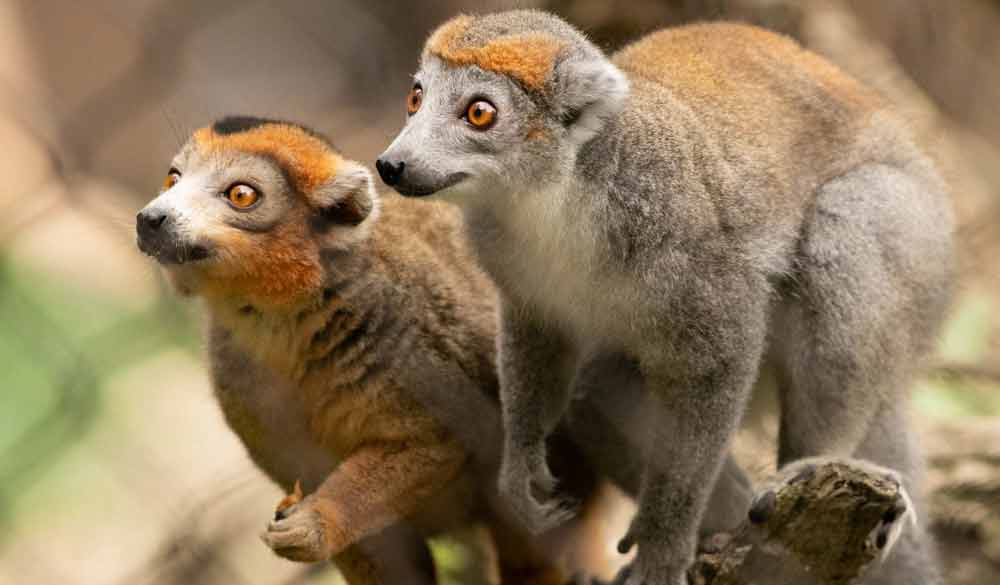Meet Our Animals
The Brandywine Zoo proves that great things do come in small packages. The Zoo features animals from the tropical and temperate areas of North and South America, Asia and Africa. Our animals range from more common species to the highly endangered. All enjoy natural settings and welcome your visit to the zoo. Some animals may be off exhibit during cold weather.
Eulemur coronatus
Crowned Lemur

Habitat
Geographic Region & Range
Diet
Physical Description
Orange “crowned” patch on top of their heads. Males have brown-gray bodies, dark tails, gray faces, and black noses. Females are lighter with white bellies.
Lifespan
Natural Habitat: 15-20 years
Under Human Care: 27 years
Threats
Status

What are AZA Zoos doing for
Crowned Lemur
Their zoo population is managed through conservation breeding programs called Species Survival Plan programs, which ensures genetic diversity and species health. There are currently around 30 individuals at 11 AZA-accredited facilities. AZA zoos fund and participate in field research focusing on the ecology of lemurs in Madagascar, the health of wild populations, genetics, training local residents in lemur protection strategies, and partnering with conservation organizations.
Fun Facts
Named because of the characteristic orange, crown shaped coloration on the top of their heads.
Lemurs have dental combs which is a built-in hair comb. Grooming is an important social bonding time!
Lemurs are the most threatened group of mammals on the planet. 95% of lemur species are at risk of extinction!
Lemur translates as “spirits of the dead” or even “evil spirits of the dead” and was picked because of the nocturnal activity and of the slender loris. The word became quickly transferred to all primates native to Madagascar.
